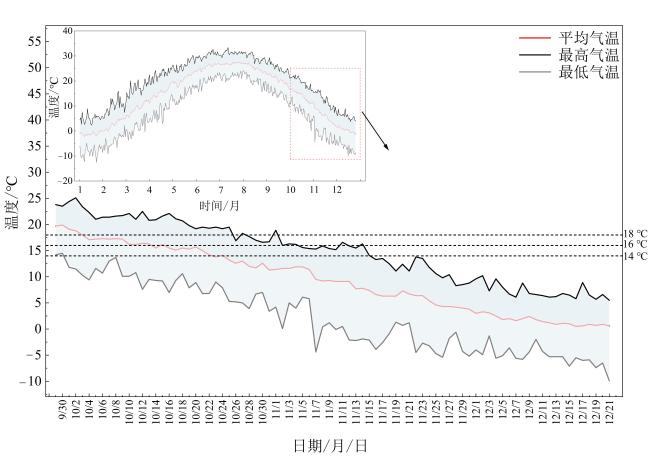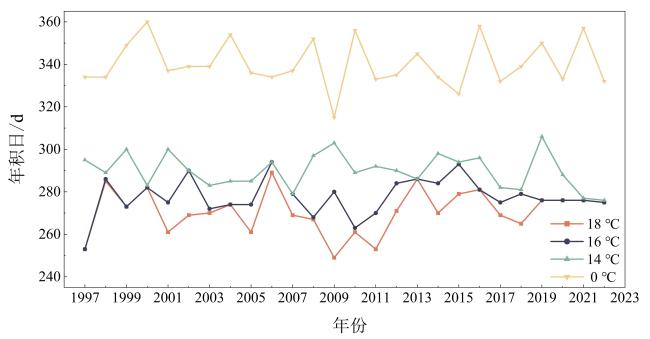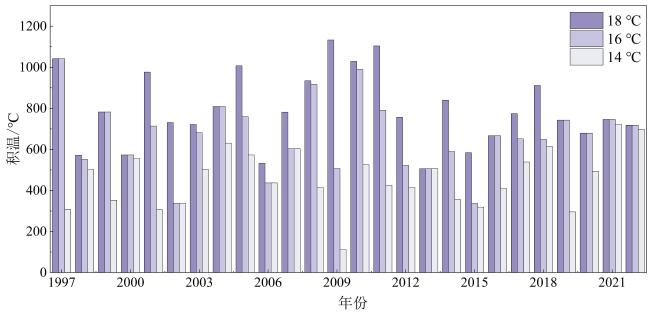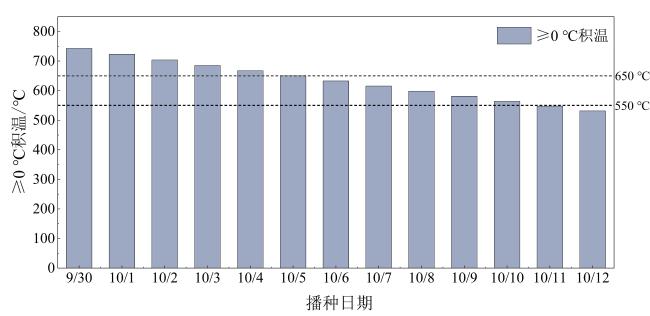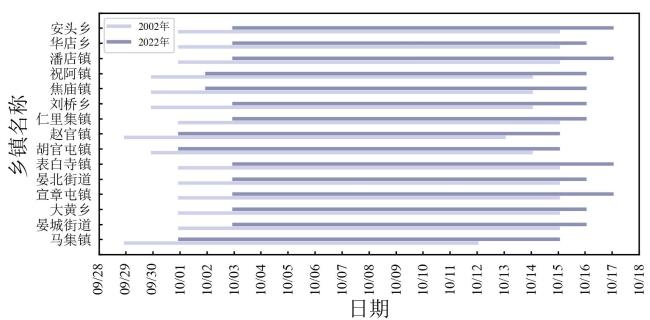在全球气候变暖背景下,如何准确掌握小麦适宜播种期是一个非常重要的问题。传统小麦播种期确定主要以田间观测法为主。在越冬至返青期通过目视观测,根据叶片数量和正常播种时期叶片数量的差别,以及麦苗大小主观判断早播或晚播。这种方法虽然简单,但是耗费人力、时间长、覆盖面积小,不能及时、准确、客观地获得冬小麦的播种信息
[11]。目前,小麦适宜播种期的确定方法有以下几种:温度阈值法、叶龄积温法和遥感监测法
[12]。温度阈值法根据不同品种冬小麦分蘖时的适宜温度,结合当年天气的具体情况确定小麦分蘖的适宜日期,进而推算小麦适宜播期。石林芝等
[13]利用河北省廊坊市大城县冬小麦播种期间的气象观测数据,计算稳定降至18、16、14、0 ℃的日期及稳定通过0 ℃的积温数据,采用数理统计方法对大城县小麦适宜播种期进行相关研究,结果表明该区域小麦适宜播种期均向后推迟。叶龄积温法是以特定品种冬前壮苗标准所需要的叶片数量为依据,将小麦每长出一片叶所需要的有效积温与冬前壮苗叶片数量相乘,再加上出苗所需要有效积温,就可以得出从播种到形成冬前壮苗时所需要的有效积温,再结合当地气象数据,反推小麦适宜播期。韦宁波等
[12]根据湖北省冬前叶龄指标确定了鄂北和鄂南地区小麦适宜叶龄,并计算小麦播种至越冬的有效积温平均值,由此推出该地区小麦适宜播期。遥感监测法包括基于冬小麦物候监测的整个生育期遥感数据拟合播期和直接使用冬小麦生长中前期的遥感数据监测播期。Song等
[14]使用两期HJ-1B和一期Landsat 5 TM影像数据,对小麦生长前期的归一化植被指数(Normalized Difference Vegetation Index, NDVI)、重新归一化植被指数(Renormalized Difference Vegetation Index, RDVI)、土壤调整植被指数(Soil-Adjusted Vegetation Index, SAVI)和差值植被指数(Difference Vegetation Index, DVI)这4个指数进行计算,再分别与播期进行相关性分析,最后基于与播期高度相关的11月22日HJ-1B的DVI数据构建了北京市冬小麦播种期监测模型,预测结果与北京市统计数据吻合较好。






